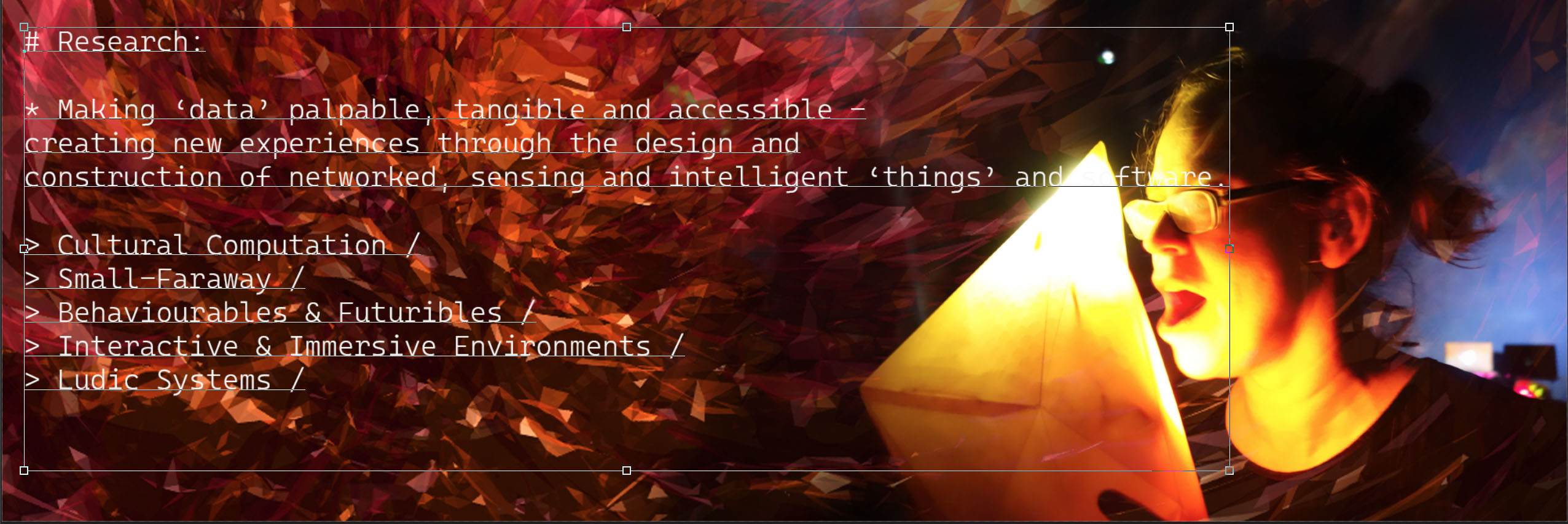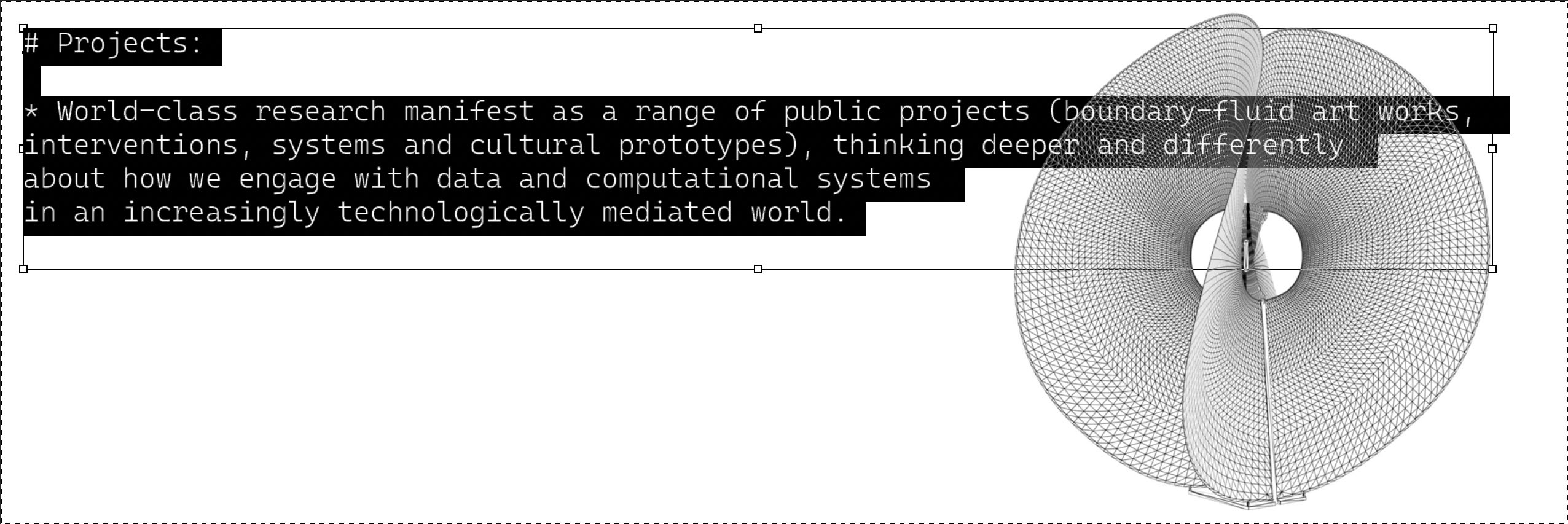GFP Bunny /
Eduardo Kac /
2000 /

Eduardo Kac and Alba, the fluorescent bunny.
“My transgenic artwork “GFP Bunny” comprises the creation of a green fluorescent rabbit, the public dialogue generated by the project, and the social integration of the rabbit. GFP stands for green fluorescent protein. “GFP Bunny” was realized in 2000 and first presented publicly in Avignon, France. Transgenic art, I proposed elsewhere [1], is a new art form based on the use of genetic engineering to transfer natural or synthetic genes to an organism, to create unique living beings. This must be done with great care, with acknowledgment of the complex issues thus raised and, above all, with a commitment to respect, nurture, and love the life thus created.”
Bio:
Eduardo Kac is internationally recognized for his telepresence and bio art. A pioneer of telecommunications art in the pre-Web ’80s, Eduardo Kac (pronounced “Katz”) emerged in the early ’90s with his radical works combining telerobotics and living organisms. His visionary integration of robotics, biology and networking explores the fluidity of subject positions in the post-digital world. His work deals with issues that range from the mythopoetics of online experience (Uirapuru) to the cultural impact of biotechnology (Genesis); from the changing condition of memory in the digital age (Time Capsule) to distributed collective agency (Teleporting an Unknown State); from the problematic notion of the “exotic” (Rara Avis) to the creation of life and evolution (GFP Bunny). At the dawn of the twenty-first century Kac opened a new direction for contemporary art with his “transgenic art”–first with a groundbreaking piece entitled Genesis (1999), which included an “artist’s gene” he invented, and then with “GFP Bunny,” his fluorescent rabbit called Alba (2000). Kac’s work has been exhibited internationally at venues such as Exit Art and Ronald Feldman Fine Arts, New York; Maison Européenne de la Photographie, Paris; Castello di Rivoli, Turin, Italy; Mori Art Museum, Tokyo; Reina Sofia Museum, Madrid; Zendai Museum of Modern Art, Shanghai; and Seoul Museum of Art, Korea. Kac’s work has been showcased in biennials such as Yokohama Triennial, Japan; Biennial of the End of the World, Ushuaia, Argentina; Gwangju Biennale, Korea; Bienal de Sao Paulo, Brazil; International Triennial of New Media Art, National Art Museum of China, Beijing; and Bienal de Habana, Cuba. His work is in the permanent collections of the Tate, London; the Victoria & Albert Museum, London; the Museum of Modern Art in New York; Frac Occitanie—Regional collections of contemporary art, Les Abattoirs—Museum of Modern and Contemporary Art, Toulouse, France; the Museum of Modern Art of Valencia, Spain; the ZKM Museum, Karlsruhe, Germany; Art Center Nabi, Seoul; and the Museum of Contemporary Art of São Paulo, among others. Kac’s work has been featured both in contemporary art publications (Contemporary, Flash Art, Artforum, ARTnews, Kunstforum, Tema Celeste, Artpress, NY Arts Magazine), contemporary art books (Phaidon, Thames and Hudson, Oxford, MIT Press) and in the mass media (ABC, BBC, PBS, Le Monde, Boston Globe, Washington Post, Chicago Tribune, New York Times). Kac has received many awards, including the Golden Nica Award, the most prestigious award in the field of media arts and the highest prize awarded by Ars Electronica. He lectures and publishes worldwide. His work is documented at <www.ekac.org>.
http://www.ekac.org/bio2pg.html




You must be logged in to post a comment.